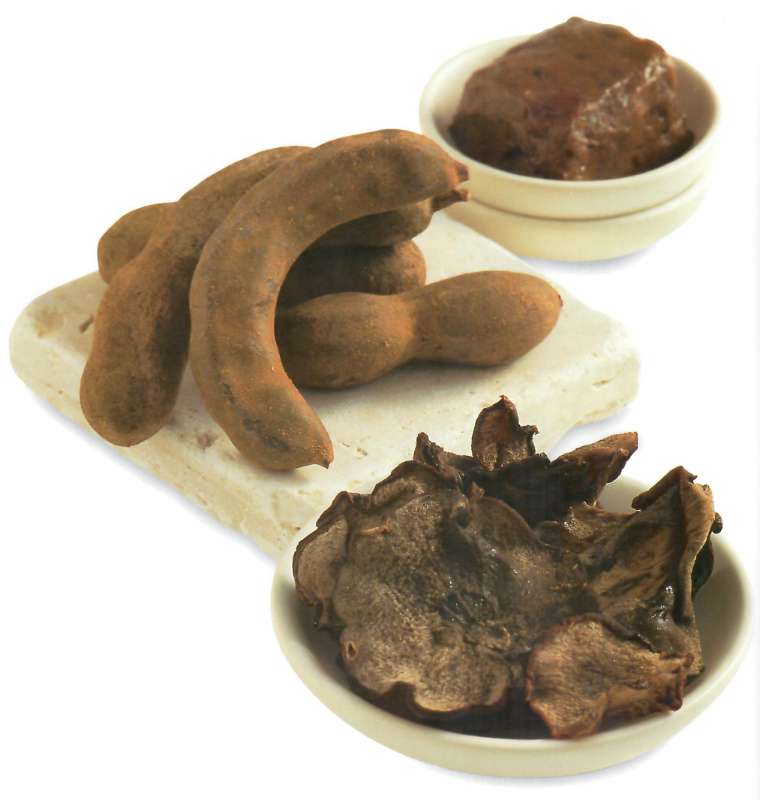Tamarind
Chinese: Asam Koh; Indonesian: Asam Jawa; Thai: Mak Kham; Burmese: Ma-Gyi-Thi.
The handsome tamarind tree, commonly called the "date of India", is believed to be a native of East Africa but is now cultivated in India, South-east Asia and the West Indies. The brown fruit pods are 15-20cm / 6-8in long.
Inside, the seeds are surrounded by a sticky brown pulp. This does not look very prepossessing, but is one of the treasures of the East. It has a high tartaric acid content, and is widely used as a souring agent.
Aroma and flavour
Tamarind doesn't have much of an aroma, but the flavour is wonderful. It is tart and sour without being bitter, and fruity and refreshing.

Culinary uses
Tamarind is used in many curries, chutneys and dhals, and is an essential ingredient of Thai hot and sour soups. It is also one of the ingredients in Worcestershire sauce. Tamarind is available in a variety of forms. Blocks of compressed tamarind and slices of dried tamarind have been around for a while, but it is now also possible to buy jars of fresh tamarind and cartons of tamarind concentrate and paste.
There is no substitute for tamarind. Some recipes may suggest using vinegar or lemon juice instead, but the results will not compare with using the real thing.
Preparation
Compressed tamarind
This comes in a solid block and looks rather like a packet of dried dates. To prepare it, tear off a piece that is roughly equivalent to 15ml / 1 tbsp and soak it in 150ml / ¼ pint / ⅔ cup warm water for about 10 minutes. Swirl the tamarind around with your fingers so that the pulp is released from the seeds. Using a nylon sieve, strain the juice into a jug. Discard the contents of the sieve and use the liquid as required. Any leftover liquid can be stored in the fridge and used for another recipe.
Tamarind slices
These look a little like dried apple slices. Place them in a small bowl, then pour over enough warm water to cover and leave to soak for about 30 minutes to extract the flavour, squeeze the tamarind slices with your fingers, then strain the juice.
Tamarind concentrate or paste
Mix 15ml / 1 tbsp with 60-90ml / 4-6 tbsp warm water. Stir until dissolved, then use as required.
Storage
Compressed tamarind and tamarind slices will keep perfectly well in a cool dry place. Jars labelled fresh tamarind, or tamarind concentrate or paste must be kept in the fridge once opened, and used within one or two months.